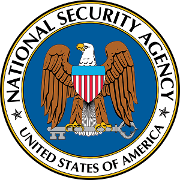Problem H
File Recovery

If you’ve completed the steps up until this point, you have
all the components required to decrypt each of the original
files. Your last step is to put it all together to decrypt the
original ransomware files. You have been provided 4
ransomware-encrypted files (attached to this problem). Using
what you have learned and what you have programmed along the
way, create a program that will run against the four files to
recover the company’s original files. Once you have done this,
you will need to find a few pieces of data hidden amongst the
company data and solve the last problem described
below.
As a reminder, you’ve created functions to solve the following:
-
Decode modified Base64 encoded ASCII text
-
Parse a TLV encoded data structure containing important metadata about each file
-
Exhaust over a weak keyspace and find a key to use as input with a stream cipher
-
Decrypt a variable-length datastream with the modified RC4 stream cipher
-
Use the “key_hash” to look up the actual key used as input into a block cipher
-
Implement a block cipher, using various encryption modes Utilize the version number to determine the mode using the following table:
VERSION
MODE
1.0
ECB
1.2
CTR
2.0
CBC
Where to begin?
To begin, look at your data! Open each of your files - where is the encrypted data?
Steganography
Steganography is the practice of concealing a message within another message. The carrier file is the file containing the concealed message. In this case the carrier file is the same ransomware image, and the encrypted file data is the concealed message. It appears based on the report, the encrypted data is appended to the end of the jpeg image. Opening up the files in a HEX editor or analyzing the bytes will make it very clear where the encrypted data starts. There is even a header on the data! The header is:
\[ {\tt LOCKED\_ DATA:} \]Remove this data from the ransomware files to begin.
Keep It Going
You have all the information you need to complete this
challenge. Take a look back through the previous problems to
remember key ways to recognize various data types and try to
match those to what you see in the data. If you need to decrypt
any data, it will be apparent when you did it correctly -
either by an obvious header string or by other identifying
features.
In some of the individual routines you’ve created, your
inputs and outputs were in HEX format. In the actual ransomware
files, you will have to analyze the data at each step and
update your files to handle raw binary data or HEX data as
appropriate.
When you have completed all of the steps in the correct order, you should have a set of 4 decrypted files.
Final Steps!
Examine the decrypted files. You are looking for $4$ HEX encoded $32$ bit values labeled “KEY_part_1”, “KEY_part_2”, “KEY_part_3”, and “KEY_part_4”. Concatenate the $4$ key parts to form the final KEY and decrypt the final input using your block cipher in CBC mode with the following IV:
\[ IV: {\tt 0xA64FCAD1B76F93E9} \]Your final solution will be code that takes the final KEY and IV and decrypts the final input.
Input
A single line of HEX encoded data that you need to decrypt to match the output.
Output
A single block of data in the form of RAW bytes.
| Sample Input 1 | Sample Output 1 |
|---|---|
432670691e0936621c8b0fe13d055aa9 |
FINISHED |

